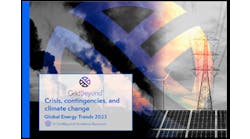An Australian clean energy advocacy group has won government funding to look into how neighborhood microgrids can reduce limits on the amount of solar energy that households can generate and store.
The Moreland Energy Foundation Limited (MEFL), which serves the community of Moreland in Melbourne, will investigate how microgrids would let neighbors share more solar when demand on the grid peaks and electricity is most expensive.
The organization will conduct the virtual modeling in Melbourne suburbs.
The Australian Renewable Energy Agency (ARENA) is contributing $112,400 (AUD) toward the $225,800 project.
“Pooling solar PV generation and storage across a number of households using a neighborhood microgrid could address certain challenges and allow residential customers to generate, store and use more of their own solar PV,” said ARENA CEO Ivor Frischknecht.
A record number of Australian households already have rooftop solar systems, he said, but limits exist on how much solar PV they can install and generate.
Moreland, a community of about 163,000 people, has 11.7 MW of rooftop solar, according to MEFL’s annual report for 2014/15. The community aims to be carbon neutral by 2030.
The MEFL study is meant to address the legacy design problem that now exists on electric distribution systems, according to Frischknecht. The system was designed to move power in one direction – from the power plant to customers. As a result, the system runs into technical problems if too much solar power is fed back into the grid at any one time.
“Microgrids could enable more solar energy to be shared between neighbors at peak times when grid power is most expensive, increasing the value to participating residences,” Frischknecht said. “In addition, the ability to reduce peak demand through such a system could actively assist network utilities to manage challenging periods of variable power production and overall activity on the grid.”
MEFL and project partners GreenSync and Jemena will study historical power consumption data from medium-density Melbourne suburbs.
The project is part of an effort by ARENA to explore the logistical, regulatory and financial challenges involved in adopting neighborhood microgrids in existing suburbs.
MEFL expects to report results in May.
Read more news about emerging neighbohood microgrids by subscribing to the free Microgrid Knowledge newsletter.






